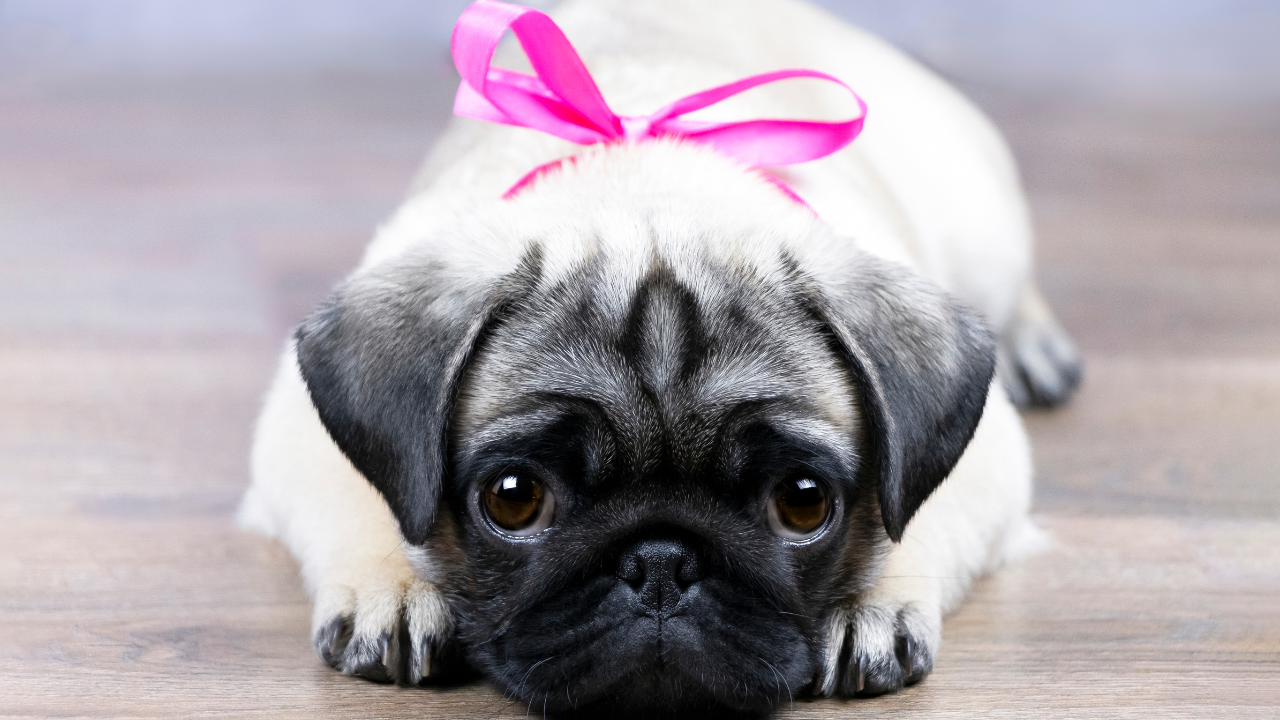
The pug has steadily ascended in the ranks of canine popularity over the years, not just for their distinctive looks but for the tangible joy and companionship they offer. With their comedic antics, unwavering loyalty, and an innate ability to sense and adapt to their owner’s emotions, pugs have carved out a special place in the hearts of their families. Their compact size makes them ideal companions for both apartment dwellers and those with more sprawling spaces, yet it’s their spirited nature and affectionate demeanor that truly endear them to pet lovers everywhere.
But pet owners seeking to nurture a healthy pug from puppyhood need to pay particularly close attention to proper nutrition and weight management. Pugs are prone to obesity, which in turn can exacerbate other health issues they’re predisposed to, such as joint issues and breathing difficulties.
Given this, if you’re currently raising a pug puppy, you’ll need to approach their diet with extreme vigilance. You should aim to strike a balance between making sure they receive the energy they need and safeguarding them from the pitfalls of overindulgence. Here’s a rundown of seven essential feeding and weight management tips for your pug puppy:
1) Look for Quality Dog Food
Finding the right dog food for your pup is just like choosing a balanced diet for yourself—it’s essential for overall health and vitality, so there’s no sense in scrimping. High-quality dog food is rich in nutrients that support their development and ensure they grow up strong and healthy.
Look for foods specifically formulated for puppies, particularly those of small breeds, as the nutrient content of these products will be tailored to their rapid growth phase. It’s just as important to check the ingredients before you buy; prioritize foods that list real meat, vegetables, and grains over fillers and by-products.
2) Observe Proper Portions
It may seem like an extra chore to measure out meals, but it will be critical towards preventing obesity in pugs—a breed that gains weight notoriously easily. The ideal portion size varies depending on the puppy’s age, size, and activity level, so it’s wise to consult a veterinarian to establish a feeding plan.
A common guideline is to start with the recommendations on the dog food package and adjust as necessary to maintain optimal health and energy levels without tipping the scale. Investing in appropriately sized dog stainless steel bowls can also support healthy portion control as your puppy grows.
3) Schedule Your Puppy’s Meals
Like humans, pugs thrive on routine, and establishing a consistent feeding schedule early on can do a lot of good for their health and well-being. It helps regulate their metabolism and digestion, and it also gets them just the right amount of nutrition they need without the risk of overeating.
Aim to feed your pug puppy around three meals a day, spaced out evenly, to keep their energy levels stable and support their growth needs without overburdening their small stomach.
4) Get Regular Exercise
Physical activity plays a crucial role in keeping your pug puppy at a healthy weight and in good shape overall. Regular, moderate exercise not only keeps your puppy lean, but also aids in developing strong muscles and joints.
Activities should be appropriate for their size and energy level, ranging from short walks to playful sessions of fetch. Bear in mind that pugs are brachycephalic (short-nosed) and should thus avoid strenuous exercise. Heavy physical activity, especially in hot or humid weather, can cause breathing difficulties.
5) Monitor Weight Growth
Keep a watchful eye on your pug puppy’s weight growth to catch any signs that they’re underweight or overweight early on. Regular weigh-ins, either at home or during vet visits, can help you track their progress and adjust their diet and exercise routine as needed.
Don’t just look to the numbers on the scale to determine if your pup is at a healthy weight. It also helps to observe their shape and body condition. You should be able to feel (but not see) their ribs under a small layer of fat and observe a visible waist when looking at them from above.
6) Go for Regular Vet Checkups
Regular visits to the veterinarian are a major part of proactive health care that lets you detect potential health issues in your pug early on. During these checkups, your vet can monitor your pug puppy’s growth, provide personalized advice on nutrition and weight management, and address any outstanding concerns you may have. These visits are also an opportune time to discuss and adjust your puppy’s diet based on their specific needs and lifestyle.
7) Keep Your Puppy Hydrated
Hydration is as vital as nutrition when it comes to the health of your pug puppy. Pugs also get dehydrated quickly, particularly in warm climates or after physical activity.
Make sure that your pup’s bowl is always filled with fresh, clean water to keep them hydrated and cool. This is particularly important after exercise and during hot weather.
Raising a pug puppy is a major responsibility, but it can also be a source of unparalleled joy amid the challenges. Your efforts to prioritize a healthy diet and be proactive about their weight management will do a lot towards helping your beloved pet live a healthy life and enriching the bond you’ll share as they grow up.
See more of my pet-related posts here
